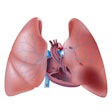The New York Times lambasted the U.S. Congress in a front-page article for its failure over the past 12 years to enact legislation that would establish uniform training and certification requirements for radiologic technologists, medical physicists, and 10 other occupations in medical imaging and radiation therapy.
The article, published February 27, is the latest in an ongoing series by investigative reporter Walt Bogdanich on mistakes being made while delivering radiation therapy and performing radiology procedures. The series, best known for making public a prostate cancer brachytherapy program investigation and shutdown at several Veterans Affairs hospitals, has also identified gaps in oversight by federal regulatory agencies and the fragmented reporting structure of adverse events in the U.S. that often fails to identify problems.
In the article, Bogdanich again reports on incidents of overradiation and a lack of oversight. Detailing the history of premature infants who received full body x-rays, or babygrams, without gonadal shielding instead of chest x-rays at the State University of New York (SUNY) Downstate Medical Center, Bogdanich wrote how these incidents were never reported to New York state health officials by the hospital.
The discovery was made in July 2007 by the hospital's radiology chairman, Dr. Salvatore J. A. Sclafani, who then took immediate action. Sclafani requested that the department's new pediatric radiologist, Dr. John Amodio, investigate.
Amodio discovered that babygrams of premature infants had been frequently performed, and that some exams of infants were poorly performed because technologists were improperly positioning the babies, Bogdanich wrote. Another discovery was that exam protocols for CT scans were not "child-sized," and children having CT scans were receiving excessive radiation dose.
Though changes were made in the radiology department immediately following the investigation, details were scanty, according to Bogdanich.
When he requested more information from the New York State Department of Health in mid-February 2011, they were not forthcoming. However, Commissioner Dr. Nirav Shah ordered two of the department's offices to investigate as a result of Bogdanich's request. New York health officials said that over the past 10 years they had not disciplined any of the 20,000 radiologic technologists licensed to practice in New York for work-related problems, Bogdanich reported.
Need for licensing and regulation
"If technologists could not properly take a simple chest x-ray, how can they be expected to safely operate CT scanners or linear accelerators?" the NY Times asked.
Individual state governments are currently responsible for deciding what standards medical staff involved with radiation must meet. Radiologic technologists are currently unregulated in 11 states, radiation therapists in 15 states, and medical physicists in 18 states. Many of these states, however, have licensing requirements for barbers and beauticians.
The Consistency, Accuracy, Responsibility, and Excellence (CARE) in Medical Imaging and Radiation Therapy Act would change this. First introduced in 1999 in Congress through the efforts of the American Society of Radiologic Technologists (ASRT), the bill would establish minimum educational training, continuing education, and certification requirements in all 50 states if enacted into law.
Set to be reintroduced in Congress this spring, the ASRT is hopeful that the CARE bill will pass both houses of Congress due to public support and increased media attention. The proposed legislation is endorsed by 26 professional medical organizations representing more than 500,000 health professionals.
The ASRT lauded the issues raised by Bogdanich. "Radiology procedures use some of the most complex and technologically advanced tools in the medical field, yet many states allow untrained personnel to operate this equipment," said James Temme, ASRT president. "No amount of legislation or regulation will ever be able to completely eliminate medical errors, but only competent, qualified personnel should be allowed to perform radiology exams."



















